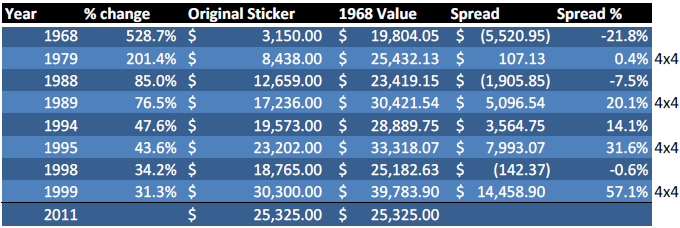polarbear
just growing older not up
One thing that hasn't been discussed in this thread is how much state and federal safety, emissions, and fuel mileage standards have impacted the price of new cars/trucks. Let's hit the high points:
1. Computerized engine drivetrain controls, and all the related hardware to run with them. How much? Thousands- don't even care to guess.
2. ABS, Stability Control with related sensors, Air Bags and related sensors, Active Seat Belts, radial tires with speed and safety ratings, yada yada. I'm not sure $10K would even cover the total bill.
3. All the weight saving technology to save fuel, along with the exotic materials used. Then there's built-in federal mileage penalties that just get added into the price of a new full-size truck or SUV (CAFE averages). More thousands.
All these costs are indirect- they don't get added into the window sticker, but represent, quite literally, a huge chunk of that base sticker price.
1. Computerized engine drivetrain controls, and all the related hardware to run with them. How much? Thousands- don't even care to guess.
2. ABS, Stability Control with related sensors, Air Bags and related sensors, Active Seat Belts, radial tires with speed and safety ratings, yada yada. I'm not sure $10K would even cover the total bill.
3. All the weight saving technology to save fuel, along with the exotic materials used. Then there's built-in federal mileage penalties that just get added into the price of a new full-size truck or SUV (CAFE averages). More thousands.
All these costs are indirect- they don't get added into the window sticker, but represent, quite literally, a huge chunk of that base sticker price.



